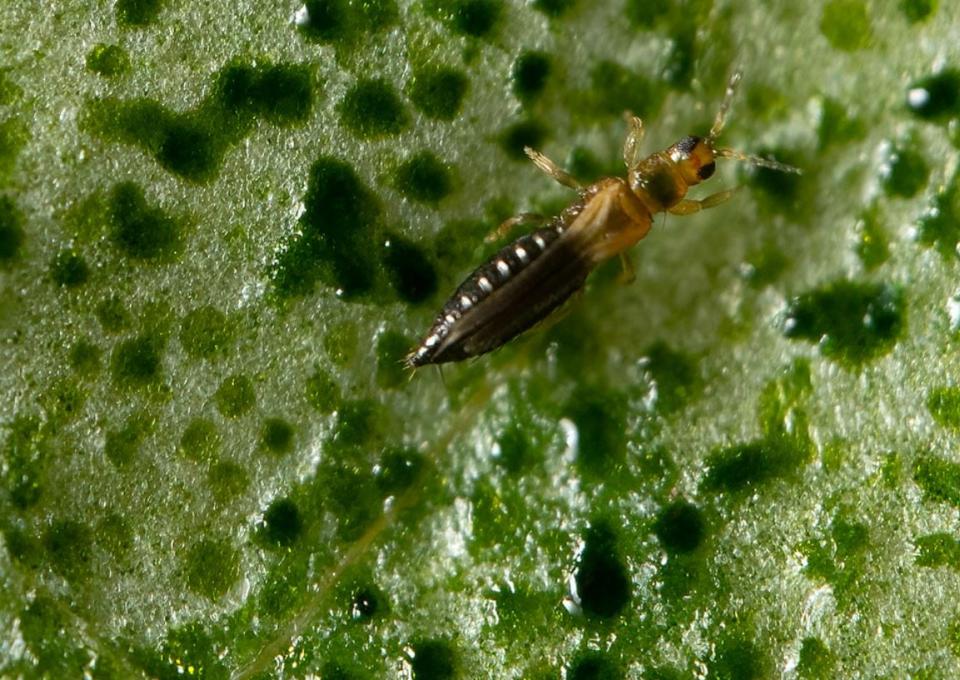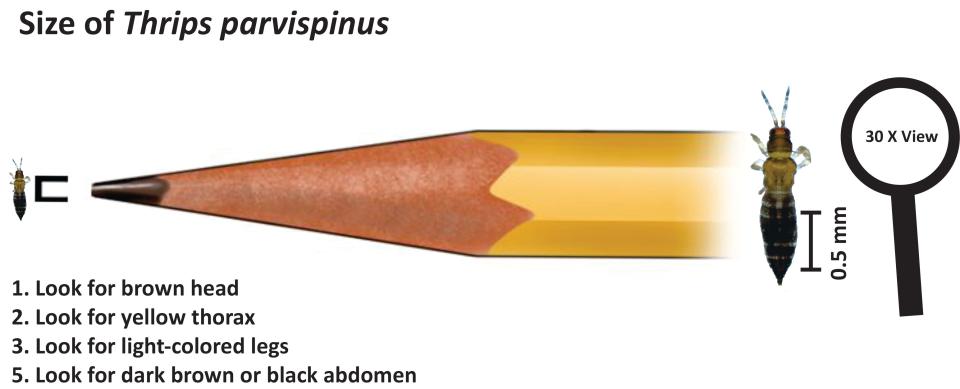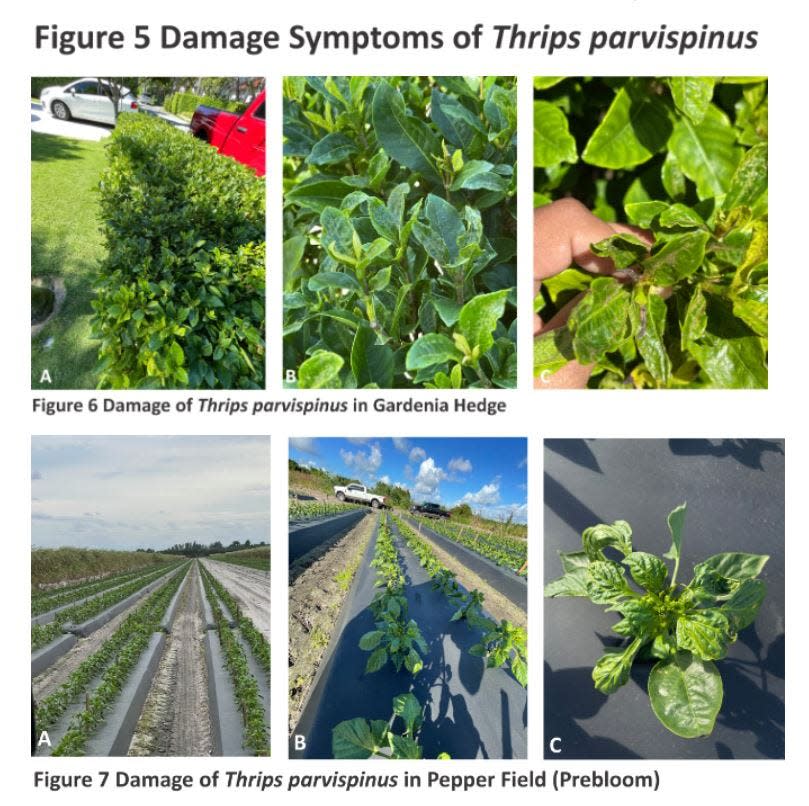5 things to know about invasive species to Florida killing landscapes, crops
A nearly invisible invader from the Asian tropics, the thrips parvispinus, was first noticed in Palm Beach County in 2022 by attentive landscapers on tony Palm Beach Island watching their fragrant gardenias and showy rock trumpets desiccate on their stems.
In the rich agricultural soils that grow row crops and commercial ornamental plants, millions of dollars in damage was happening. Peppers were hit especially hard, showing signs of curling leaves, stippling, scabbing and stunted growth when infected. Growers went on high alert, so did the scientists.
A scramble ensued to find a fix before this winter’s growing season. Entomologists from UF and the U.S. Department of Agriculture joined forces, set up labs and scoured garden centers for plants infected by the pesticide-resistant menace.
Here's what to know about the thrips parvispinus.
What type of weather does the deadly species thrive in?

Like all invasives that reach the Sunshine State, the thrips parvispinus seems to flourish in its warm southern reaches but it was first discovered north of Orlando in an Apopka greenhouse in 2020. The fringy-winged insect has since been identified at a garden center in Arvada, Colorado, a Food Lion in Tifton, Georgia, and retail locations in the Carolinas, according to a University of Florida report. It has also been intercepted in Ohio and Pennsylvania.
What is the size of the thrips parvispinus?

Though the adult female is visible to the naked eye, she’s smaller than a pencil tip. The larvae are transparent, a perfect camouflage. “It’s very small and it hides very well,” said Muhammad “Zee” Ahmed, a USDA research entomologist who is working on early identification of the thrips. “If you miss them in the early stage, you will have a heavy infestation because they reproduce fast.”
What is the life cycle of the thrips parvispinus?
The life cycle of the thrips parvispinus is about two weeks. The female is fertile within nine days, laying about 15 eggs in a clutch.
What type of plants does the pest destroy?

It's not a picky eater, preferring ornamental plants, but just as likely to gorge on vegetables, fruits, and even tobacco.
How to kill the invasive species?
Out of 32 conventional and 11 biological insecticides, researchers found a handful that killed or restricted feeding. The conventional insecticides have technical names, such as spinosad and pyridalyl, and are mostly only available to commercial pest control companies. But mineral oil, sesame oil and garlic oil were also found effective, and the study recommends rotating them with traditional insecticides.
Want to learn more about this invasive species? Read Kimberly Miller's full story: Taming a pest - New invasive species to Florida is tiny but deadly to landscapes and crops
Kimberly Miller is a veteran journalist for The Palm Beach Post, part of the USA Today Network of Florida. She covers real estate and how growth affects South Florida's environment. Subscribe to The Dirt for a weekly real estate roundup. If you have news tips, please send them to kmiller@pbpost.com. Help support our local journalism, subscribe today.
This article originally appeared on Palm Beach Post: Facts on thrips parvispinus Florida invasive species killing crops

